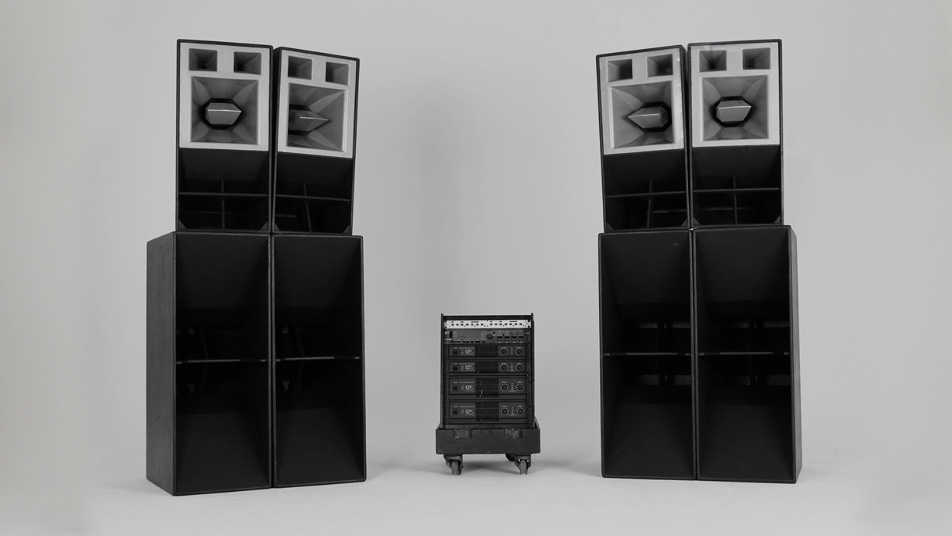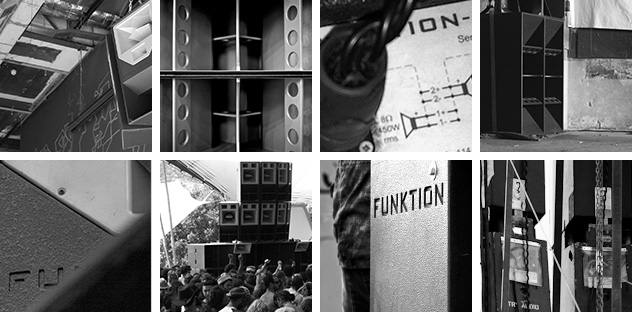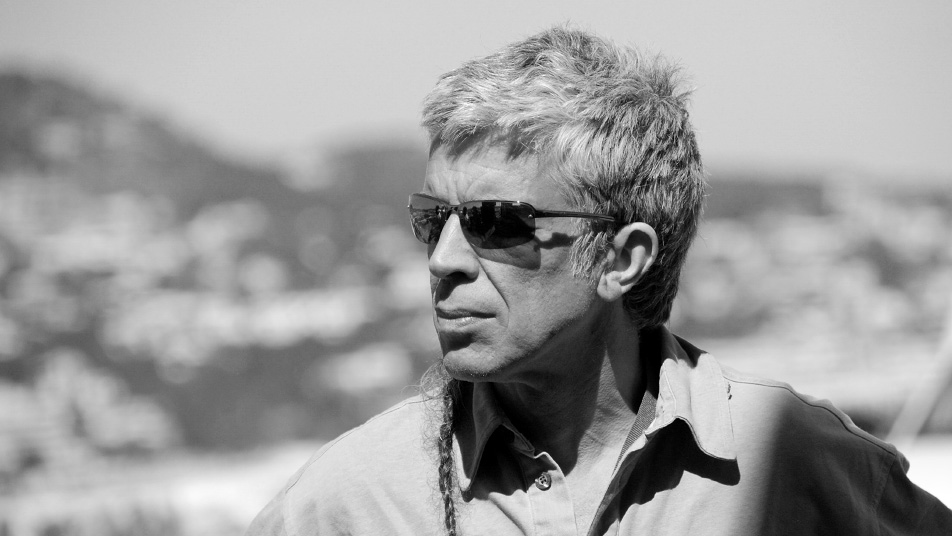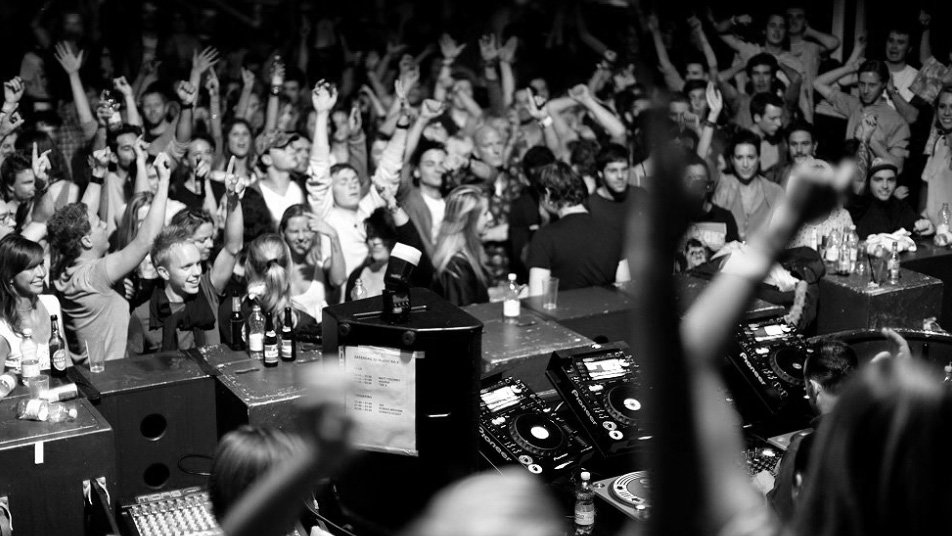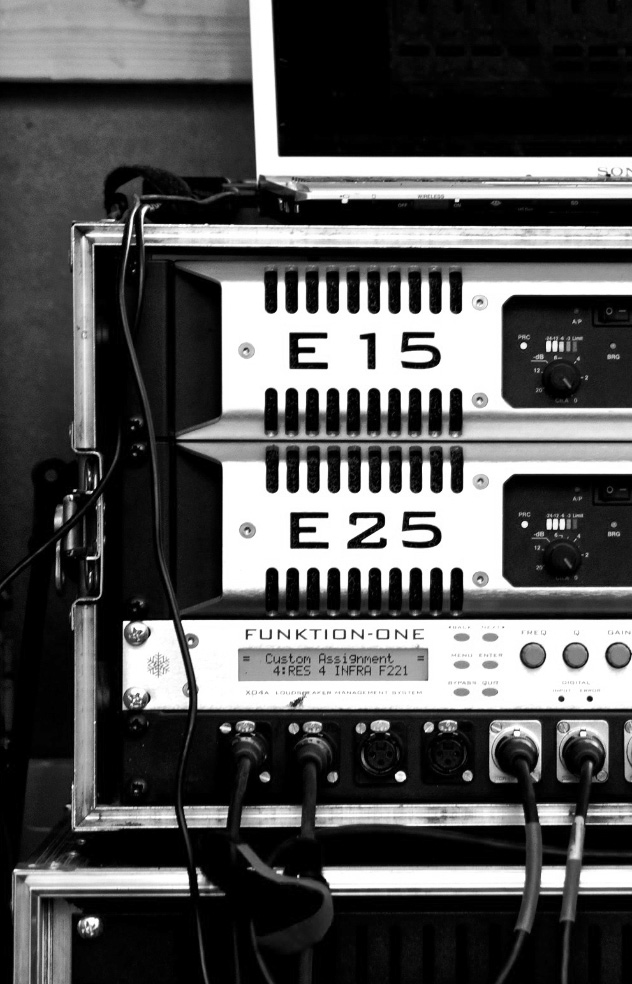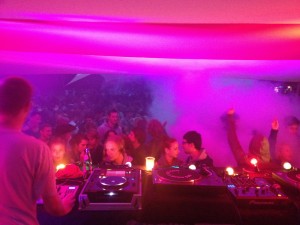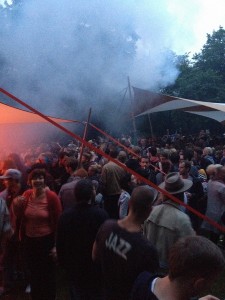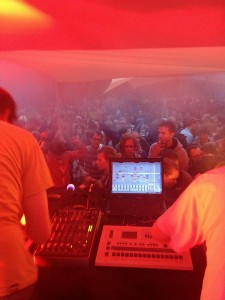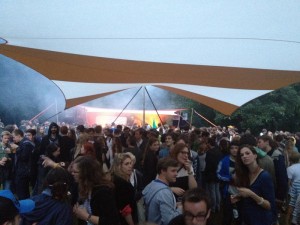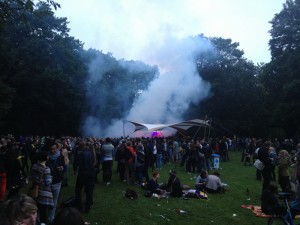Tony Andrews, the man behind the iconic sound system, tells Jordan Rothlein about a life spent searching for the perfect rig.
You can fill a DJ booth with the best record and CD decks, screw the perfect cartridges onto your turntables and plug a fine pair of headphones into your mixer of choice, but without a soundsystem, it’s really all just metal and plastic. And if you’ve spent any time in a club with too little sound, too much sound or too much distortion—in other words, a club without a good soundsystem—you may wish none of it had ever been wired up in the first place.
What makes one bit of DJ gear better than another is often open to interpretation, as I discussed in last month’s feature on turntable cartridges. What makes a soundsystem exceptional isn’t so subtle. A good club or festival rig should be loud but clear, immersive but spacious, smooth but also tight and punchy. Audio engineers and acousticians can quantify these traits through this or that measure, but the rest of us can feel the difference. Sound is a physical phenomenon, and club systems aim to enhance its visceral impact. Good and bad systems both do this, but the former doesn’t send you running in the opposite direction. If you’re reading this site, you probably like to log long hours in the dance, and good sound makes that a whole lot more enjoyable.
I was hesitant to write about one speaker or another, because so much goes into the quality of a club’s sound beyond the system. The room itself—its size, how it’s shaped, the materials it’s built from, whether it’s empty or full of people—have a profound effect on what music sounds like. A system that works in one setting won’t do any favors for another, whether it’s too big, too small or otherwise wrong for the space. When we talk about great sound, then, we’re talking about specific systems in specific clubs, like the Martin Audio rig in fabric’s Room 1, or incredibly unique set-ups like the audiophile-style Klipsch system at David Mancuso’s Loft parties in New York, or the imposing Killasan wall-of-sound found at Wax Treatment events in Berlin.
All caveats aside, one speaker brand—Funktion-One—has become something like an industry standard over the past 15 years, to the extent that folks who normally don’t give any mind to tech have taken notice. The brand often gets billing on club websites and party flyers, a kind of shorthand for seriousness about music: „Come to our party. The music will sound incredible.“ Russ Moench, the creative head of The Labyrinth, told me the Funktion-One rig he employs there is one of the festival’s stars, right up there with the techno luminaries who put it to use. At the Berghain coat check, you can buy a t-shirt emblazoned with one of the menacing stacks that line its main room. However many other variables are actually at play, Funktion-One has become a byword for impressive sound.
The company’s signature technology—the use of paper cones instead of metallic compression drivers, no EQ out of the box, and a holistic approach to system design—are relatively well known at this point, but I wanted to hear Tony Andrews‘ take. The company’s cofounder and public face, Andrews is known as a bit of a character. In publicity shots, he’s often wearing a purple pullover or turtleneck that matches the casing of his company’s speakers, as if he’s another component in their product line, with gray hair close-cropped save a meticulous braid extending from the back and over his shoulder. He’s top dog at a successful audio company, but he likes to get his hands dirty—a coworker told me he saw Andrews at Space in Ibiza before the opening party personally tending to the system. In interviews, he bemoans much about contemporary sound, from the quality of the output of soundcards and CDJs to the sonic insult of DJs playing mp3s at high volume.
When I rang him at Funktion-One’s headquarters in Surrey, I found him both affably cutthroat and intensely idealistic. „When it’s good,“ Andrews said of big sound, „it puts you into a meditative state.“ I came away from our conversation convinced that, more than any particular design approach, it’s this guiding belief that’s made Funktion-One systems such a good fit for the music culture that’s embraced it. „Anything I say is because I’ve lived it,“ Andrews says. „I’ve looked into it and tried to understand it, pretty much. And I think that’s what makes me fairly unique in the business, because I’ve definitely always come at it from a spiritual viewpoint.“
Andrews‘ interest in building loudspeakers dates to the late ’60s. He made it his life’s work after leaving a university course in geology „to involve myself in the musical culture of the time, which I felt was a vibrant vehicle of new consciousness,“ as he said in a 1988 paper presented at the Audio Engineering Society in New York. He saw the potential for live music to resemble a „feedback loop between what the band were feeling and playing and what the audience were hearing and feeling,“ an ideal that presaged the lofty goals of techno DJ sets. Andrews knew there weren’t systems around that could produce the right kind of sound for such an exchange. „Due to my long-held belief that evolution of consciousness is vital to our continued existence as a species on this planet,“ he says later in the paper, „I felt that I found my task in life, and determined to apply myself to the evolution of loudspeakers, with particular emphasis on enclosures.“
In the early ’70s, loudspeakers were ripe to evolve. The nascent field of amplification for rock concerts and festivals was rooted in a constellation of rental companies who built and maintained their own rigs. The advent of transistors had allowed for more powerful amplifiers, but the speakers themselves, like WEM’s four-by-12-inch column speaker, weren’t as efficient as the horn-loaded speakers that had been able to bring big sound to movie theaters in a previous era.
Part of the problem, too, was that no one was really thinking about live sound in terms of the system—about which components were reproducing which frequencies, and how placement would affect how and, critically, when the sound would hit the crowd. „When you want to do a stadium or an 80,000-person festival site,“ Andrews explained, „there just isn’t [any single speaker that’s] loud enough. So you have to use collections of them, if you like. You have to use a bunch. And as soon as you do that, then you have to start paying attention to how they all join together to become one.“
Andrews spent the first part of the ’70s touring with bands and tinkering with speaker formations and cone drivers, which provided a considerably smoother sound than the metal drivers that he says have been de rigueur in the industry since the 1930s. Around 1977, with his partners Tim Isaacs and John Newsham, Andrews‘ morphed his rental company into Turbosound, so named because their early devices looked like jet engines. The quality of their systems—which amplified Glastonbury, the Royal Albert Hall and the Grand Ole Opry—brought them great acclaim, but the margins for rentals were famously low. Confident they had better products than anyone else, they decided to give their rental company over to another company and begin manufacturing speakers for sale. It wasn’t exactly a revolutionary idea—companies like JBL and Tannoy had been making loudspeakers for years—but at Turbosound, „We were definitely thinking about how you get them all to collaborate and become one thing.“
In the ’80s, Turbosound released the TMS3, an all-in-one speaker box. „It was quite heavy, but my God it sounded good for the time,“ Andrews remembers. „And it was, what can I say—roadworthy. You could use it and set it up anywhere. And quite a few of those boxes are still being used today in various corners of the world.“ Their big, smooth sound and hefty build made Turbosound a natural fit for the foundational M25 parties that helped break rave culture in the UK. Not for the last time in his career, his company’s speakers became a star: „They used to advertise it on the flyers.“
Andrews speaks of that era as a manifestation of the ideal music experience that brought him to loudspeaker design in the first place. „To be honest, I like dance music. I’ve always liked it, right back to Motown, Stax and Atlantic in the mid-’60s. That was always my preferred music, because I like dancing. It’s been with me all my life, really. I mean, I listened to a little bit of Leonard Cohen because everybody was, but I’m not big on introspection and misery. There’s enough of that. Music’s about freedom of spirit, or should be.“
The musical environment may have been nearly perfect, but the business side of things, which had never been Andrews‘ forte, was growing distinctly un-utopian at Turbosound. „There’s been a lot of business bullshit,“ he said, „and I’ve always been a very trusting person. And basically you trust people, they abuse you, you get pissed off, you take all your toys back.“ Turbosound was eventually sold to AKG, which itself was subsequently folded into Harman, and Andrews and a handful of his research and design colleagues broke away to start something new.
That was Funktion-One, which, though founded in ’92, didn’t have a major installation until the Millenium Dome in London, in 2000. The years in between were spent in the proverbial woodshed. Funktion-One, Andrews said, was „a continuation“ of the approach they’d taken to speaker design at Turbosound. They started with the last all-in-one they’d built with their old company—the TFS-780, known best as the Flashlight—and set about figuring out what made it tick and how they might refine it to fit their ideals: ultra-efficient systems free of distortion, broadband noise and the need for processing (like EQ) out of the box. As the rest of the industry moved to line arrays—the columns of speakers that flank nearly every festival stage—they burrowed deeper into their own approach. They studied their drivers and thought about how they might optimize dispersion. The axeheads and dramatic horns we now associate with Funktion-One cabinets began to take shape.
Andrews assured me that these designs, however indelible, are completely functional. „I mean, we realised that it was an interesting aesthetic, and we capitalized on it. But we didn’t make any of the shaping to look like that. That’s what it needed to be to perform. And the fact is, if you look at anything in life that’s got a natural job, like everything from the wing of a bird in the air to the shape a fin has to be or a sail—the function they have to perform develops an aesthetic that seems to look good. There’s a naturalness about it.“
Funktion-One systems may have a look, but their sound is what’s most striking about them. The sweet spot on Berghain’s dance floor may not be the best location for a long and meaningful conversation, but with a properly tuned Funktion-One system, it’s perfectly possible—a testament to the systems‘ efficiency and power. „When you really have to drive a speaker hard,“ Andrews said, „the diaphragm starts to deform. You get all sorts of secondary effects happening that have nothing to do with the original. And all this, if you like, spurious rubbish fills up all the spaces between the original—what was intended with the production. In other words, if you can keep it really clean, and particularly really good transience, then the sound stays in its packets. It’s all neat and tidy, and what you find is that there are spaces in between the packets of sound, and people have often remarked that they can still have a conversation. Because if you pitch your voice right you can put it into the spaces.“
Let’s go back to the other factors that determine good sound: the room, the audio chain, the audio format itself. Funktion-One tackles the first two. While the company’s components are available through distributors, Funktion-One technicians tend to get personally involved with higher-profile installations. „When you’re going to put 20,000 watts into not that big a space, it can’t be like a glorified toilet. It just can’t,“ Andrews said. The company looks at plans for the club and makes recommendations for what they’d install and how they think the room should be acoustically treated. I asked Andrews if they’d ever turned down a project because they thought the club wouldn’t get serious about acoustics. He replied that they might, but that it generally won’t get to that point. „If they’ve come to Funktion-One in the first place, it’s because they’re looking for quality audio, and nine times out of ten they go and do something.“
Funktion-One also has electronics components, like amps and polarity checkers, manufactured to their specifications. They even had Formula Sound start making Funktion-One-branded DJ mixers, because save „an old Urei, maybe,“ they didn’t think there was one on the market up to the standards of their rigs. If Andrews could, he’d have a hand in every link in the chain: master and cut the vinyl, code his own digital audio file format, design every component in the booth, maybe even set the gain and work the EQ so that DJs couldn’t redline. „It’s like a series of windows, one behind the other,“ he said, using his favourite simile for the signal chain at clubs. „You only need one dirty window and you can’t see the view any more.“ But he realizes that all he can do is keep tinkering with the thing he knows best, the one he’s committed to professionally and spiritually for more than four decades. „I’ve just got my whole being tuned into listening to audio. It would be crazy to not keep going with it, if you see what I mean.“
Quelle:


